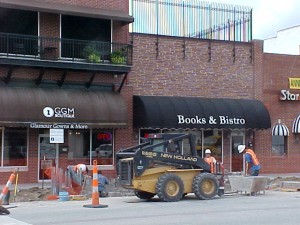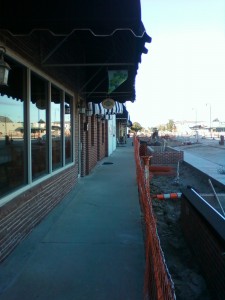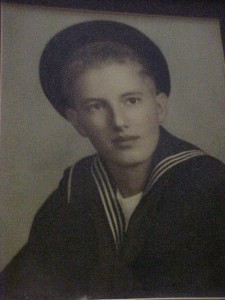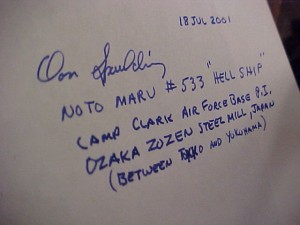Maybe David Bowie said it, at least, most musically. Turn and face the…
Changes. Ch-ch-ch-ch-ch-changes. (You can YouTube it, for the full musical effect…)
Songs aside, I learned something today, which prompted the question: Are you ever too old to learn?
Or is that rhetorical? Like, “Does a bear **** in the woods?” You know, questions posed without expecting an answer, like: Are you kidding me?

I usually try to give an answer to those types of questions, just for fun. Example:
Customer, looking over a book and speaking aloud: Well! What’d’ya know?
Me, standing nearby: What do I know? Well! The sun comes up in the east, for one thing. Dogs bark. Halloween is in October. The North Star is found in the north. Do you want the complete list?
Customer, who also loves answering rhetorical questions, as it turns out: Yes, please. In chronological order.
Today, I learned more about rhetorical questions. By definition: A rhetorical question implies its own answer as a way of making a point. Examples: “Aren’t you ashamed of yourself?” or “What did I tell you?”

There’s a question that is often asked that people don’t realize is rhetorical. Have you ever been asked, “Why did you do that?” or “Why did you [whatever]?” That’s a tough one because the only honest reply that will satisfy the asker is, “Because I’m stupid.”
Here you go. You back the car into a tree. Your spouse, sitting beside you, turns to you and asks, “Why did you do that?” Here are your answer-options:
1. I misjudged the distance between the rear bumper and the tree, but assumed I had a little more backing-room and assumed the tree was stationary. Honest.
2. I have been hoping to find a way to raise our insurance rates. Honest.
3. I’ve been drinking all afternoon and needed an excuse for a nap. Which I just woke up from. Honest.
4. I just planted that tree yesterday, and never imagined it would grow so fast. And would replant itself closer to the driveway. Never would have believed it. Honest.
5. Because I’m stupid.
Spouse, picking #5, the only real answer: Honest?
Are you ever too old to learn? (No.) Does a cartoon bear commercially promote hygienic rolled tissue paper in the woods? (Yes. A sanitized version of original rhetorical posing.) Do I look like I’m laughing? (No.) Shall I open a can of whup-rear-end? (This is a family blog, after all.) Marriage is a wonderful institution, but who would want to live in an institution? (H. L. Mencken)
Rhetorical, on a theme:
1. “If practice makes perfect, and no one’s perfect, then why practice?” (Billy Corgan)
2. “Isn’t it a bit unnerving that doctors call what they do ‘practice’?” (George Carlin)
My top-five rhets (of course, in this day and age, rhetorical is much too long a word to be offered without reduction, and must suffer the fate of temperature (temp), medicine (meds), repetitions (reps), rheumatoid arthritris (RA), applications (Apps), compact disks (CDs), gonads (‘nads), Miami Hurricanes (Canes), and others…) – actually, rhets is just too confusing, too, given the silent letter and confusing spelling. (Solution example: Nothing compares 2 U: Prince, performed by Sinead O’Connor.) Just call them Rets. Okay? (I mean, OK?)
Whoo-y!
Top five Rets asked in McHuston Booksellers this week:
5. So, what do you do in here? Sell books?
4. Is this like a library?
3. Is the owner here? (Unspoken rhetorical reply: Was the door unlocked?)
2. Do you like to read?
1. Is the street construction hurting your business?
I’ve been staying up late trying to come up with answers (they ARE expected) to #1, what I originally believed to be a rhetorical question, and I’ve had to start repeating myself in reply for fear of dipping into the pool of answers that might be taken as sarcastic or condescending. The simple truth of the matter is: the complete and total removal of automobile parking in front of – and adjacent to – the entire block’s store-fronts, combined with restricted traffic flow and barricaded intersections – is not particularly beneficial to conducting business.
There. I’ve admitted it.
But – I’m not complaining. A guest today – very, very unhappy with the public expenditure for the main street changes – offered this commiseration: I’m sorry they’ve done this to you.
Answer (and I said it aloud…): They haven’t done this TO me… they are doing it FOR me.
As with all aspects of change, there is an abundance of reluctance to accept. The Rose District changes don’t bring with them guarantees – But – if they slow traffic from 45 mph to the posted 25, I’m all for it. If they allow vendors the opportunity to set up standard canopies to display their festival wares – without forcing pedestrians to step into the street because of narrow sidewalks – I’m all for it. If some restaurants (and their patrons) would like enough space to dine outdoors, I’m all for it. If water from rain and thunderstorms has a drain to move toward – I’m all for it (Main Street did not previously have ANY stormwater drainage). If shoppers trying to cross the street can do so without fearing for their lives (and I have personally witnessed people clasping the hands of their children, or trotting alone – their body language broadcasting their nervousness at trying to cross in front of drivers who would seemingly rather run them down as to allow passage – ) I’m all for it. If there is even a chance that the district will become a destination for those who are currently driving to Tulsa’s Blue Dome district, Cherry Street district, Deco district, or ANY other Tulsa commerce destination – I’m all for it.
Personally, there are times that I take a different street to get to a familiar destination, just because I enjoy a change of pace. On occasion, I buy a different kind of bread, just for fun. Some people get into comfort zones. Routines. Ruts. Sorry. I don’t. I know – as a change-accepting business owner – I don’t fit in with most of my neighbors, but I’m not trying to be a thorn in anyone’s side.
If everything stayed the way it always was, we’d still be navigating Broken Arrow’s primary road – Main Street – in wagons pulled by teams of horses digging their hooves into the mud or kicking up dust on the sun-hardened dirt.
We can live without change, if you like.
We’ll come to Main (in that fantasy world where nothing ever changes) because no other area offers retail establishments. If nothing ever changes, we’ll still refer to those businesses as Mercantiles. Saddlers. Blacksmiths. Saloons. If nothing ever changes, we’ll all have to visit Main Street, because that’s where the banks are.
(Oh, you don’t remember the long-debated change in laws that allowed for “branch banking” and the construction of banks in secondary locations – and later – teller windows in Walmart stores and Reasor’s grocery stores? Before that legal “change,” folks HAD to drive downtown to deposit their checks. Manually. There was no Direct Deposit. And downtown was busy.)
No air conditioning. No pavement. No sidewalks. No dress shops. No flower stores. No restaurants. No chocolatiers. No gift shops. No jewelry stores. No phone stores. No ad agencies. No professionals. No change.
Oh, wait a minute. Oops.
BA downtown already offers these changes.And you don’t want change. Hmmm. You don’t want anything different than the good old days?
Shall we boycott them, because they aren’t 1800’s?
What about it? Is change so bad?
Oh, pardon me. That’s rhetorical. Or, it should be.





